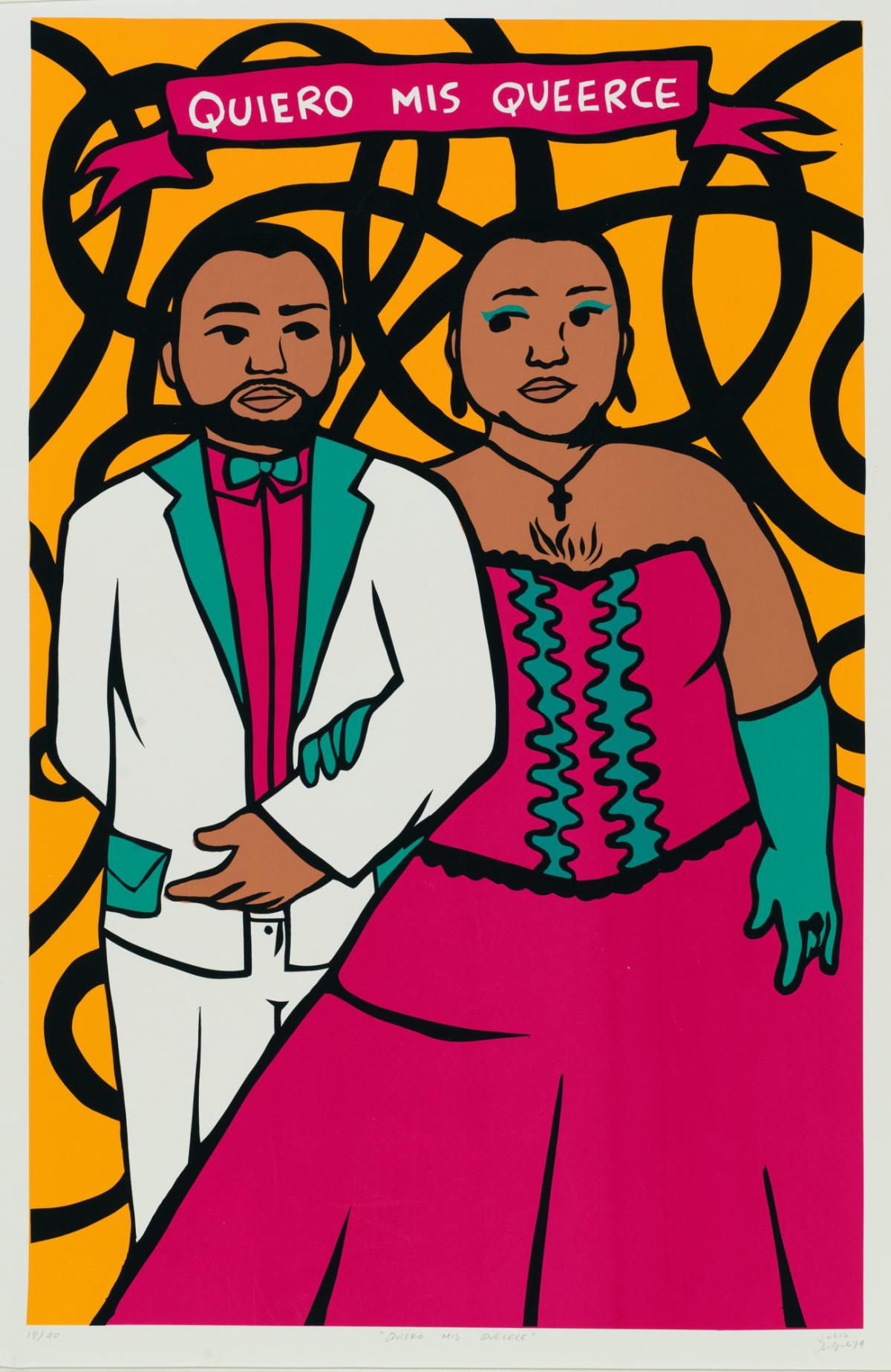
¡Printing the Revolution! The Rise and Impact of Chicano Graphics, 1965 to Now offers an expanded view of American art and the history of graphic arts, featuring previously marginalized voices from Chicano art, including women and LGBTQ+ individuals. The rise of the Chicano movement in the 1960s and 1970s marked a completely new way of being a person of Mexican descent in the United States. It was also a shared effort to build community, enact political change, and reimagine U.S. identity, history, and culture. However, the Chicano movement was never static; envisioning and defining Chicano culture remains a fluid process to this day. Chicana and LGBTQ+ artists have pushed back against patriarchal and heteronormative tendencies that were present in the country and within the movement itself.
Self-identified queer activist and artist Julio Salgado explores a traditional rite-of-passage, the quinceañera, in his double self-portrait Quiero Mis Queerce (I Want My Queer Quinceañera). The quinceañera is a coming-of-age ritual traditionally celebrated in honor of a girl’s fifteenth birthday in Mexico, much of Latin America, and in Latinx populations in the U.S. Like other parts of Chicano culture, quinceañera rituals are continually changing. Today, many in the Latinx community in the U.S. are celebrating a doble quinceañera at the age of 30. This new celebration has especially gained traction in immigrant communities where children, caught between two countries, may have missed out on a celebrating at a younger age.
Salgado plays with the concepts surrounding the traditional quinceañera such as the fancy dress, as well as with the concept of doubling in this artwork. The screenprint features a figure wearing a tuxedo and another donning eye shadow, dangling earrings, and a quinceañera-style dress that does not hide their bodily hair. Inspired by Frida Kahlo’s well-known painting Las Dos Fridas (1939), Salgado employs a similar duality to reflect on his challenges as a gay teen hiding his femininity. As a young man, Salgado wanted his own quinceañera to celebrate coming of age. When the artist turned thirty, he created this image, he said, to “honor the little boy who didn’t get a quinceañera.”
SAAM’s landmark exhibition, ¡Printing the Revolution! The Rise and Impact of Chicano Graphics, 1965 to Now, explores how Chicanx artists have linked innovative printmaking practices with social justice. This blog post is part of series that takes a closer look at selected artworks with material drawn from exhibition texts and the catalogue.



















